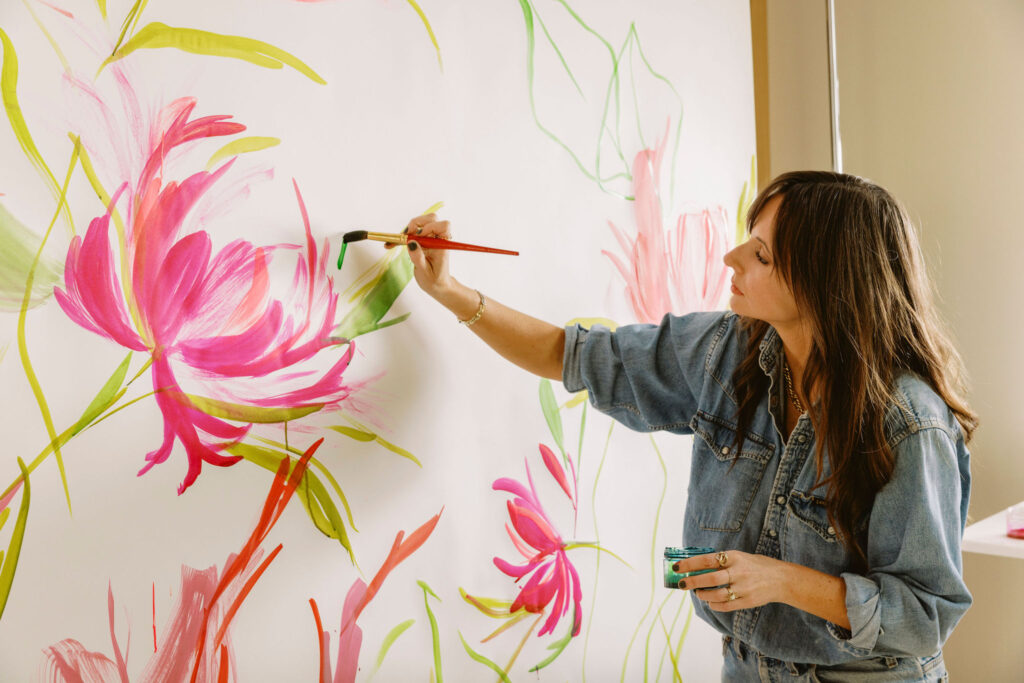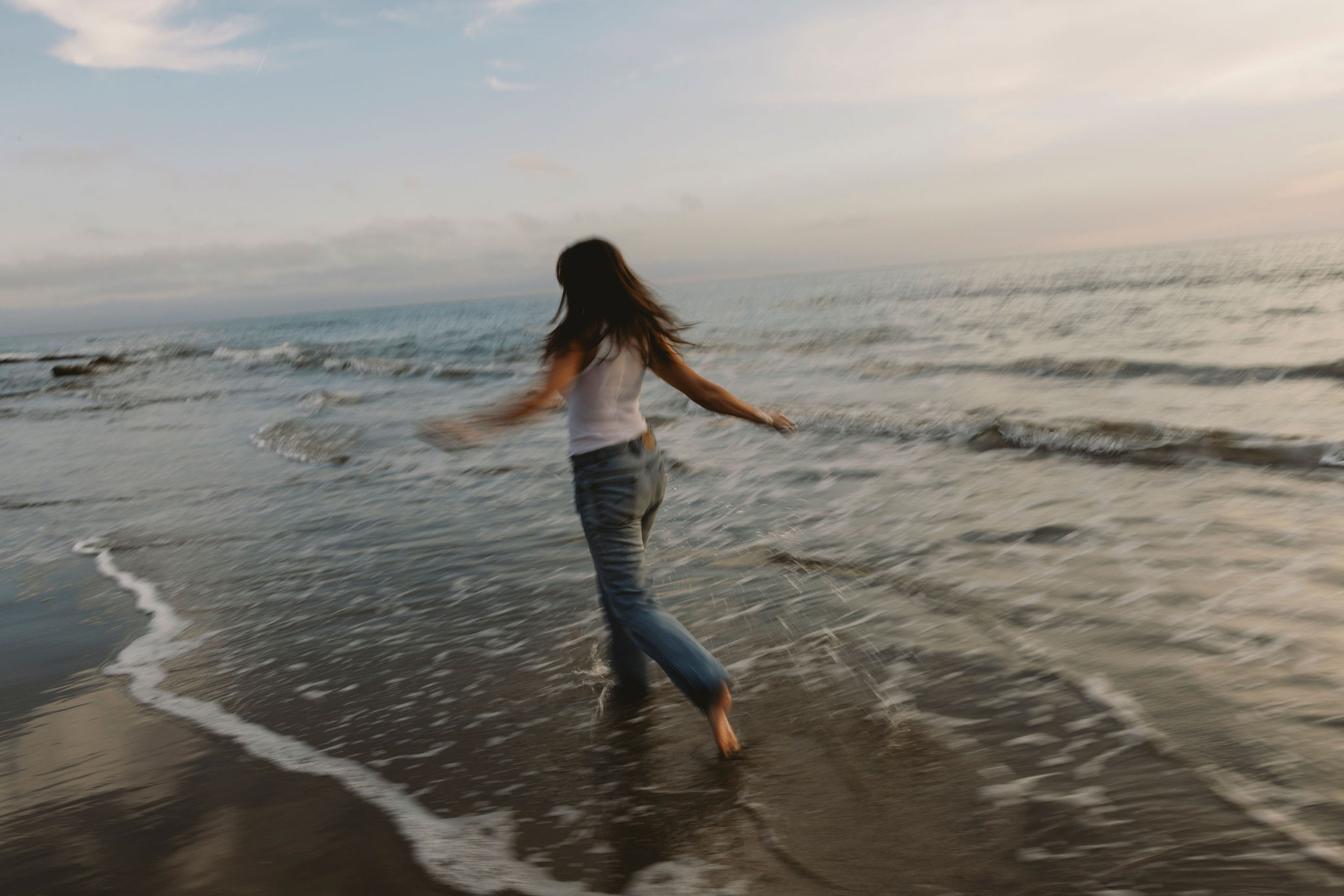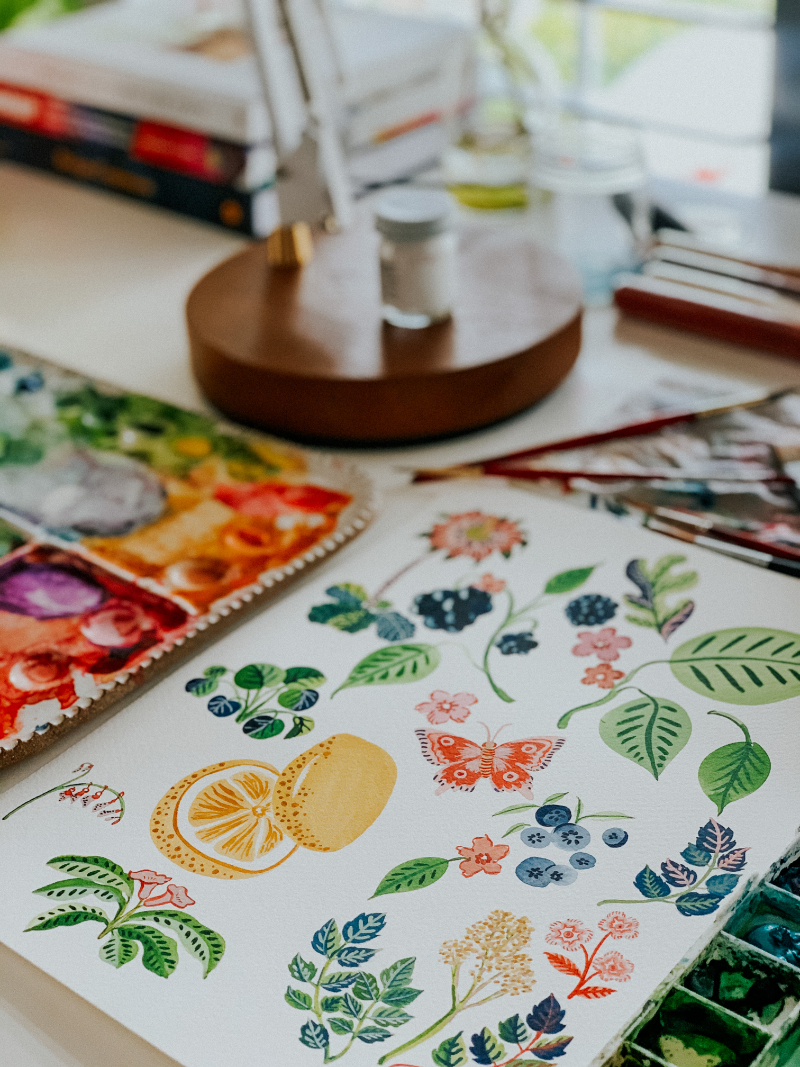Have you been feeling the urge to go deeper with your meditation practice? Or maybe you’ve been trying to get into meditating (and you’ve heard about all the benefits more times than you can count), but sitting silently has never quite worked for you. If so – you’re in the right place. I believe that art and meditation are a match made in heaven. Sitting still has never really worked for me either, and both art and meditation have the power to calm the mind, reduce anxiety, and help us connect with our inner selves.
Combining these two practices can create a powerful tool for enhancing your meditation experience. I know because it’s worked for me. So today, I want to talk about three ways you can use art to deepen your meditation practice and find more peace and clarity in your life.
1. Perform focused, repetitive movements
One of the most effective ways to use art in meditation is through focused, repetitive movements or patterns. It sounds simple enough, but this technique can help calm the mind and reduce anxiety, making it easier to enter a meditative state.
When getting started, think about the soothing rhythm of drawing simple lines or shapes over and over again. This repetitive action not only keeps your hands busy but also helps your mind focus on the present moment. Whether you're doodling spirals, waves, or any other pattern, the key is to let your mind relax and enjoy the process. This form of meditative drawing can be incredibly calming and grounding, providing a sense of peace and tranquility.
If you’re looking for a medium to practice repetitive movements and want to get into watercolor painting, this is a good place to start.

2. Drawing or painting repetitive patterns helps you focus.
This sounds similar to the first one, but it’s less about the movement you’re making and more about what you’re creating. Drawing or painting repetitive patterns, such as mandalas or geometric designs, is another fantastic way to enhance your meditation practice. Mandalas, in particular, are known for their intricate, circular designs.
Creating a mandala can be a deeply meditative experience. As you draw each line and shape, you focus your mind and let go of any distractions. This type of art requires concentration and patience, which can help you enter a state of flow where time seems to stand still.
The repetitive nature of the patterns can facilitate focus, allowing your mind to become quiet and centered. Plus, the finished piece can be a beautiful reminder of your meditation practice, too.
3. Blending and layering colors can encourage relaxed focus.
Forget what you thought you knew about focus, it doesn’t always have to be hard. Another way that I like to meditate is by blending and layering colors to create transitions in my paintings (like ombre patterns or even watercolor florals). It’s a wonderful way to encourage more relaxed focus during meditation. The process of mixing colors and watching them blend harmoniously can be incredibly soothing and satisfying.
The goal here is that when you focus on the gentle transitions between shades, your mind can let go of worries and become immersed in the beauty of the colors. Whether you're using watercolors, acrylics, or pastels, the act of blending colors encourages you to be present and mindful. This technique not only enhances your artistic skills but also provides a calming effect that can deepen your meditation practice.
Extra Tips Combining Art and Meditation
If this sounds like something you’re interested in, I have more advice for you (artist to artist). You might already know this, but to get the most out of combining art and meditation, creating the right environment is important. Here are some extra tips to help you set the stage for a peaceful and creative experience
Create a peaceful space
I’m a big believer in setting up an art zone (whether that’s your own studio or a spare closet). Set up a dedicated area for your art and meditation practice. This space should be free from distractions and clutter, allowing you to fully immerse yourself in the experience. Ideally, you don’t want three loads of laundry staring back at you in the corner of your eye. A clean, organized space can help clear your mind and make it easier to focus on your art.
Add music
Who said meditation had to be silent? Soft, calming music can enhance your meditative state and make the creative process even more enjoyable. Choose instrumental tracks or nature sounds that help you relax and concentrate. The right music can set the mood and create a serene atmosphere, making it easier to lose yourself in your art. Here's my personal favorite playlist right now.
Aromatherapy
You get extra points for trying this one. Incorporating aromatherapy into your practice can further enhance the calming effects of art and meditation. Essential oils like lavender, chamomile, and sandalwood are known for their relaxing properties. Use a diffuser or light a scented candle to fill your space with a soothing aroma that promotes relaxation and mindfulness. Plus, using the same scent regularly can help you get into a meditative state faster because your body will start to associate the scent with your relaxed state.
Consider soft lighting
This is another misconception I hear as an artist. You don’t need to always paint in a well-lit space. Lighting plays a crucial role in creating a tranquil environment. If you’re looking to combine art and meditation, opt for soft, warm lighting that creates a cozy and inviting atmosphere. Avoid harsh, bright lights that can be distracting. Natural light is also a great option if available, as it provides a gentle and calming effect.

Taking your art practice further and growing as an artist
Whether you consider yourself an artist or a hobbyist right now, I fully believe that learning to creatively express yourself can change your life. If you want to dig deeper into some of the fundamentals of art, make sure to check out my course, The Art Within. Recently updated this year, this course is your step-by-step guide to blending techniques, art fundamentals, and so much more. I teach you how to take your ideas and run with them, creating your own unique work to put out into the world.
Blending Art and Meditation
Incorporating art into your meditation practice is all about embracing the creative journey and letting go of the need for perfection. It's a time to explore, experiment, and express yourself without judgment. Remember, the goal is not to create a masterpiece but to find peace and joy in the process.
If you're new to this practice, I encourage you to start small. Choose one of the techniques above and give it a try during your next meditation session. And if you’re looking for more













+ show Comments
- Hide Comments
add a comment